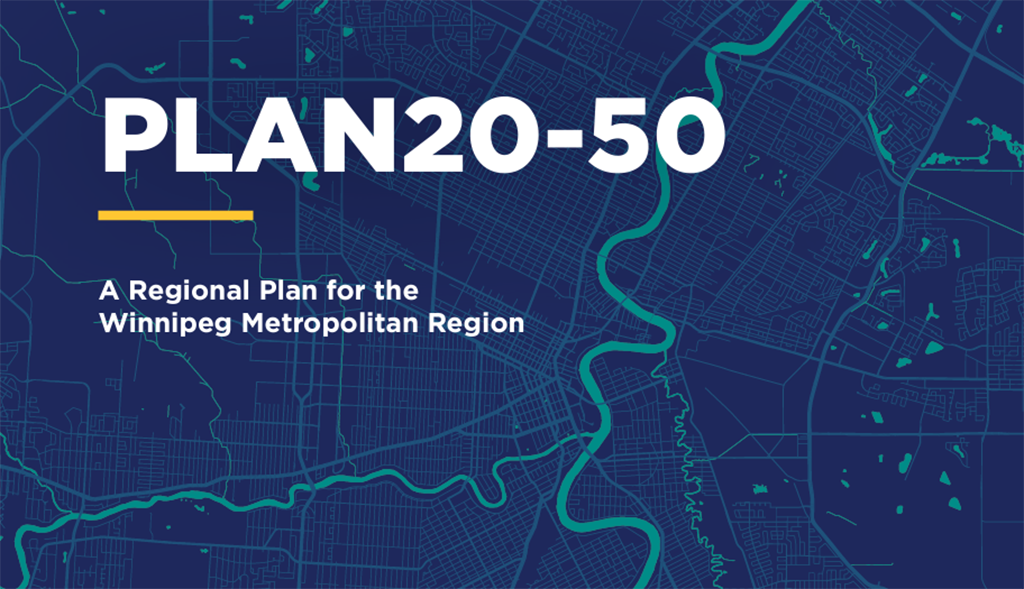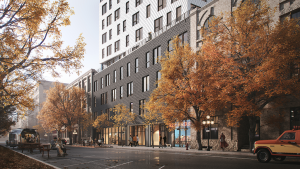The Manitoba government has announced it will introduce legislation this fall that will allow municipalities to opt out of the Winnipeg Metropolitan Region’s Plan 20-50.
Calling the upcoming legislation a “freedom bill,” Premier Wab Kinew said
in an announcement, “This is about giving municipalities the freedom to make their own planning decisions, rather than force them into a planning region that isn’t working.
“We’ve heard what municipalities have to say and that’s why we’re moving forward with legislation to make membership in Plan 20-50 voluntary.”
The premier, who leads the provincial New Democratic Party, says he won’t scrap the regional plan altogether, because some municipalities might want to remain part of it.
Plan 20-50, a 30-year planning strategy for Winnipeg and 18 nearby municipalities, was proposed by the former Progressive Conservative government in 2019.
The region in south-central Manitoba accounts for about two-thirds of the province’s population and its Gross Domestic Product.
The plan was developed by the provincially appointed Winnipeg Metropolitan Region (WMR) and was, until recently, going through public hearings.
Although Plan 20-50 offers little detail on the changes it could bring, it suggests municipalities set higher-density housing targets and collaborate on everything from transit routes and firefighting services to wastewater infrastructure and recreation.
Municipalities would be expected to update bylaws to conform with the plan and avoid passing rules that contradict it.
Kinew’s decision to allow municipalities to opt out occurred days after five Winnipeg-area municipalities said they wanted Manitoba to amend the plan or scrap it entirely.
They’re protesting what they call “forced involvement” in a process they say will increase the cost and complexity of their governments and make them unable to make their own land-use decisions.
WMR executive director Jennifer Freeman says the intention of Plan 20-50 is to end the patchwork of rules and regulations in neighbouring municipalities that sometimes lead to conflict between municipal governments.
The plan has sparked a flurry of angry social media messages. Some local residents say, for example, that a call for expanded transit service is evidence of a plot to regulate personal vehicles out of existence.
“Many people are still hyped-up after COVID and the parental rights controversy and they’re suspicious of authority,” says Christopher Adams, adjunct professor of political studies at the University of Manitoba.
“There’s been more attention to the plan in the rural municipalities than in Winnipeg, where it’s barely registered.”
Freeman says the WMR has temporarily adjourned the Plan 20-50 public hearing process.
The government’s decision to allow municipalities to opt out has surprised some Winnipeg-area developers.
“This decision certainly puts the status of the plan in question,” says Lanny McInnes, president and CEO of the Manitoba Home Builders’ Association. “So our immediate question to the government is: If Plan 2050 is not the plan, then what is the plan going forward?”
McInnes says Plan 20-50 would have established a framework to collaborate and plan at a regional level.
“The goal is to maximize the investments of the three levels of government… This helps the residential construction and land development industries better plan for the long-term growth opportunities in the region,” says McInnes.
Aaron Moore, University of Winnipeg professor of political science, says the plan is mostly aspirational.
“There’s not a lot of detail in it,” says Moore. “The strength of the plan is its prescriptions for practical problems, like transportation networks and sewer systems.”
Moore says most of the growth – about 80 per cent – that is forecast for the region is expected to take place within the boundaries of the city of Winnipeg and just outside it.
“So there’s not a huge need for regional planning co-ordination at the moment,” he says.
Plan 20-50 is not the Winnipeg region’s first kick at bringing municipalities together.
In 1972, Winnipeg and 11 surrounding communities were amalgamated to form one big “Unicity.”
“The idea was to create a single government that would address the complexities of rapid post-war growth by centralizing such governance functions as planning, administration and policy-making,” says Jino Distasio, professor of urban geography at the University of Winnipeg.
“Plan 20-50 is different from Unicity. It’s a plan to co-ordinate some of the activities of separate municipal governments.”
Christina DeMarco, former lead planner of the Metro Vancouver Regional Growth Strategy, calls regional planning “planning without borders.”
“It makes for more efficient infrastructure – water, sewer, landfills, regional park systems – because it can take advantage of economies of scale,” says DeMarco. “It also enables municipalities to take a long-term view beyond the election cycle.”
Delivery of a regional plan can be difficult, however.
“It’s a long-term campaign, but everyone needs to keep talking, because regional planning is worth pursuing,” says DeMarco.









Why are we scrapping a plan for more efficient infrastructure simply because some municipalities object? What about the greater good..?We need to have the courage to do what is best for the most people and Manitoba.